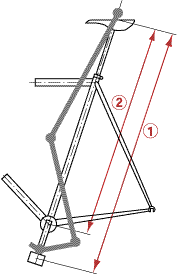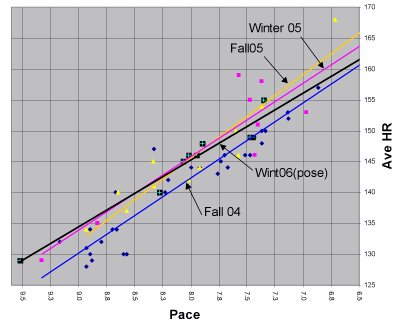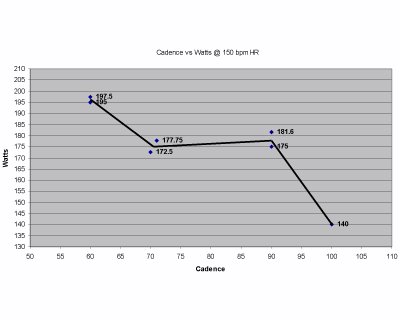Saddle Height
2. O-Symmetric rings are available now and have been used by a few pros in time trials. I don't know much about them, but they are not elliptical (they look sort of square, as you can see in this photo of Bobby Julich's TT bike:

Now, even though I'm open to the idea of a non-conventional chainring system, I'm not about to spring for $1000 for a system that, if I loved it, I'd have to buy 4 times. (For a road bike, a TT bike, a Computrainer bike, and a tandem). Because unlike the other systems I'm describing, I think this one takes some getting used to.
But Rotor realized that too, so they recently introduced Rotor Q-Rings. They are an elliptical chainring that has the larger radius occurring when the pedals are at the power positions (3 and 9 o'clock). They are designed to approximate the effect of the Rotor system, and the elliptical shape is supposed to be smoother than the asymetrical shapes of the BioPace and O-Symmetric rings. I just can't figure out why this is the 3rd or 4th generation of non-circular chainrings. I don't know much, but this is the first thing I would have tried. They look like this:

Any way, I was intrigued by the idea, they aren't terribly expensive (about $200 new), they don't add weight, and it's winter experimentation season, so I bought a set. The big ring is called a 53, but the radius varies from an effective 56-tooth on the downstroke to an effective 51-tooth at the top and bottom of the stroke. The small ring is called a 42, but it's 44 in the long direction and 40 in the short direction.
I had to raise my front derailleur about 1cm to clear the long axis of the big ring, and now there are maybe a couple of centimeters of space between the derailleur and the big ring when the small axis is up. In training I had no shifting issues at all, but the first time I tried shifting to the big ring on a group ride this weekend, the chain momentarily jumped off the rings. It worked fine after the first time. It might need a little adjustment and I might need to get the feel of it.
I had already decided to go to a bigger rear gear (I ride a 23 now in training and was going to go to a 25). But with the bigger front rings, I've actually gone to a slightly smaller gear ratio even after adding the 25. So I guess I need a 26 now to get the ratio I want for training.
I'll have to admit that the rings felt great the first couple of times out, and I felt very strong on Saturday's group ride -- but that could be due to other factors. After a couple of weeks of acclimation and adjustment, I'll do a couple of time trials to find out if there is any benefit. If I get something between 4 and 9 percent power increase as shown in the research, I'll be amazed. But you never know. It may be one of those things that are beneficial to some people, but not to others, which can make the research inconclusive. A 5% increase in power would be about 12 watts for me. That's a number that will be noticeable in my testing.






.jpg)





